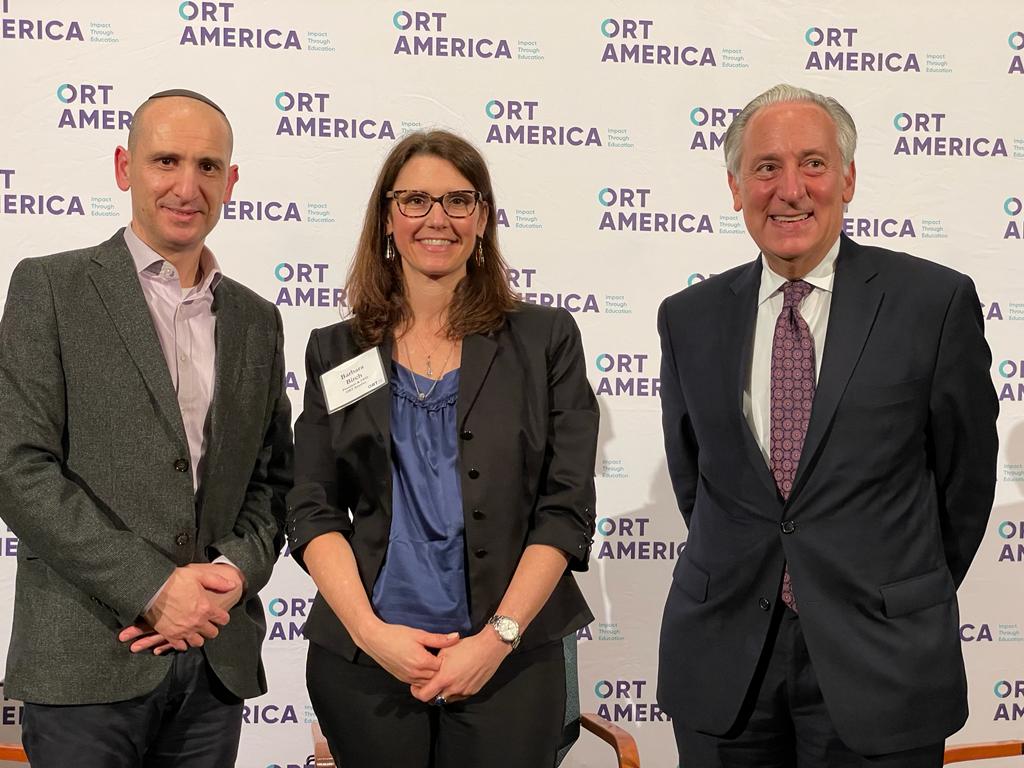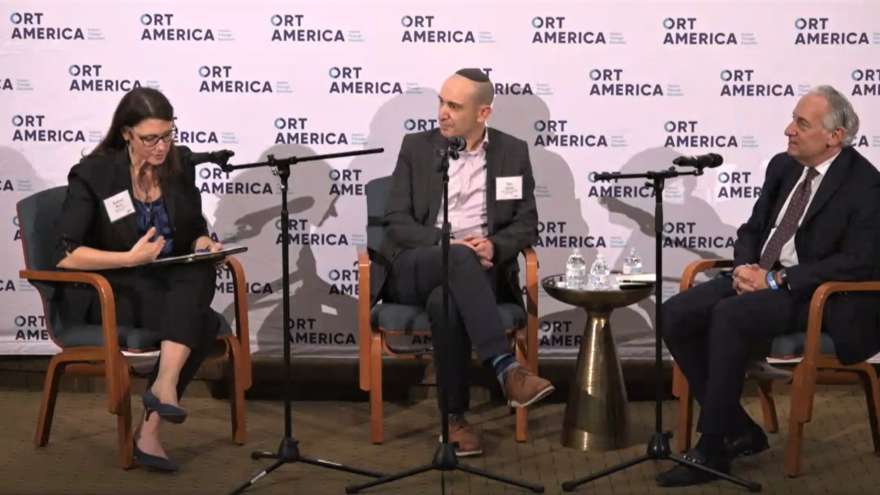After spending a little more than a week in the United States this month, Dan Green, director general and CEO of World ORT, reflected on his visit and the changes since his last trip before the onset of the coronavirus pandemic.
Q: This was your first visit to the United States since taking on the top leadership position at ORT. How was this visit different?
However, facing a global pandemic that impacted our entire network in places near and far was a challenge I could not have imagined. As I have been more able to meet in person with constituents in the United Kingdom and during my recent visit to the United States, I can’t help but think that while everything is different, one thing has not changed: ORT supporters, friends and colleagues are as committed as ever to supporting our goals of providing the best education possible to our more than 100,000 students.
Q: Why do you think ORT is thriving today?
A: ORT was founded in 1880 in St. Petersburg to sustain the Russian Jewish community during a time of pogroms and poverty by providing vocational training for practical work. During Communist rule, ORT activities ceased in Russia. In the early 1990s, ORT returned to the former Soviet Union (FSU), and since then, our presence has grown to 16 schools in seven countries. As a result, we are having a huge impact on the ground revitalizing Jewish life.
We also have a strong footprint in Latin America. Our school in Buenos Aires is the largest Jewish school in the Diaspora with 10,000 students, and they have plans to expand student enrollment to 11,000. The economic situation across Latin America is very difficult, and the impact of the pandemic has really taken a financial toll there. One thing that warms my heart is that we have been able to step up and support schools and communities at this time—just as we always have. Although the needs have changed over 141 years, our response has not.
Q: What is the main focus of ORT’s work?
A: One of the pillars of ORT is “Education for Life.” From our London office, we plan programs and activities, and also provide professional development and leadership training to our teachers with the latest advances in STEM education. As the world becomes increasingly dependent on technology, the demand for engineers and skilled technicians is growing. Israel, in particular, is known for its successful high-tech industry, and yet there is a shortage of skilled labor.
This is where World ORT Kadima Mada comes in and begins the educational process with really young students, teaching them subjects like robotics and coding. We are opening new possibilities for these students, who mostly come from challenging socio-economic circumstances. The result is a win-win for both the tech sector and the students, who can look forward to employment and meaningful lives.
We are also uniquely positioned to bring students together—usually in person and now virtually—from across our network, which spans more than 30 countries. The cross-fertilization of ideas and meetings with students and teachers enhance their educational journey. An important area that we have prioritized during this time of uncertainty is our attention to the mental health and well-being of our students and teachers across the network. This is a key concern that our staff has been addressing through teacher training and forums that deal specifically with this issue.
Q: How does ORT strengthen Jewish Identity?
A: The late great Rabbi Lord Jonathan Sacks said something very profound in 2013, just as he was finishing his time as chief rabbi in the United Kingdom. He said there were two powerful movements in Jewish life at that time—segregation and assimilation—and that Jews were either engaging in the world at the cost of disengaging from Judaism or engaging with Judaism at the cost of disengaging from the world. I think that sort of clarion call was an attempt to strengthen and promote a Judaism that can engage with the world today. For global Jewry today, the role models or teachers that we need are those who can work in the modern world and simultaneously inspire young Jewish people with a love of Yiddishkeit.
We’re at a crossroads, and we don’t want people to go down a path of segregation. We don’t want people to go down the path of assimilation. There’s a third way; it’s striking a balance for people in a very open, pluralistic, inclusive environment. ORT provides that balance by giving people the tools to succeed in the real world, but also understand who they are as confident, engaged Jews.
Q: How can we combat anti-Semitism?
A: One of the key values of ORT is something called tikkun am, which is a counterpoint to the better-known tikkun olam, “repairing the world,” also one of our values. Tikkun am, “repairing our nation,” is focused on the strengthening and flourishing of Jewish communities, and ensuring our students understand who they are as Jews.
We have moved this to the forefront and extended our offerings in terms of the Jewish experience. Many young people embrace tikkun olam; this is certainly the case for many young liberal Jews in America as they increasingly engage with issues around environmental causes and diversity. We want our students to be committed to the Hebrew language, Jewish culture, Israel and Jewish practices as well. Because a concern of mine is that tikkun olam without tikkun am is a potential pathway towards assimilation.
So we are fusing those two values for our organization. And the curriculum that we’re now implementing is designed to strengthen the Jewish learning and experience in all our schools.
Q: What are you most proud of?
A: One of the things I’m probably proudest of is how our network continues to grow. Just in the last few years, Jewish community schools in Madrid and Barcelona in Spain, and in Bogota and Singapore, and soon, hopefully in Costa Rica, have knocked on our door and said: “We want to join you to be part of this global Jewish network.”
For many communities, certainly those perhaps a little bit more isolated, smaller communities really want to reach out and be part of a much wider Jewish family, and that’s something that we offer. I am also proud of our students who are finding their place in their communities. Starting at a very young age, we have kindled that spark of Judaism again. What we see by the time they leave our schools is a stronger Jewish identity and much deeper engagement with their religion and with their heritage, and hopefully, a sense and purpose of wanting to give back and be part of something. In fact, many of our students, as well as alumni, serve as volunteers, communal leaders, teachers of directors of our programs across the network. It is encouraging to see how they want to give back and feel part of that Jewish community.



























